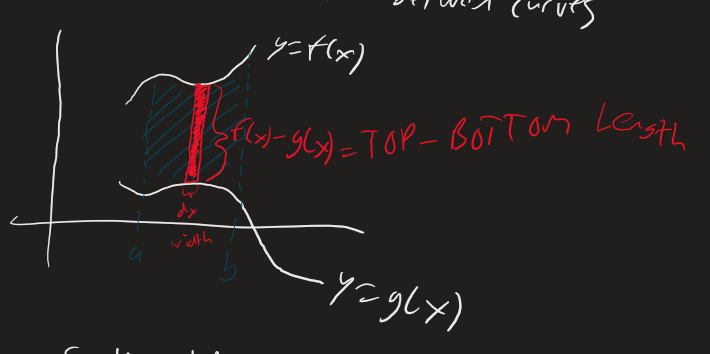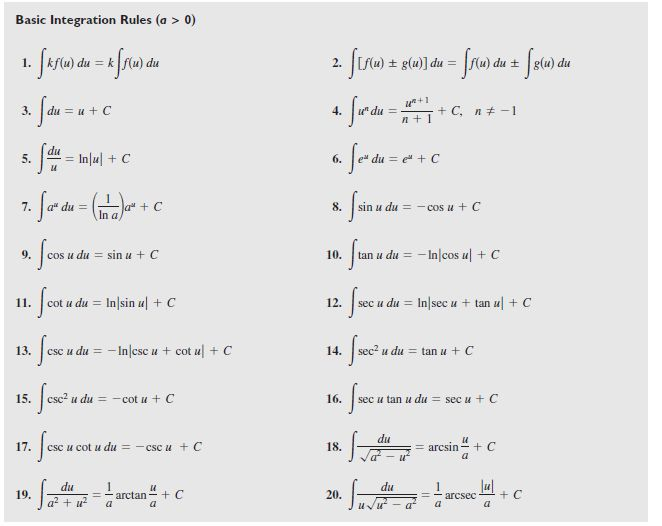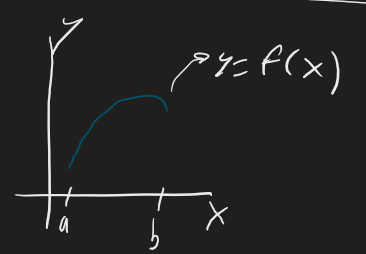#Calc-2#Math#Integrals An Integral is a way of finding the area under a curve between two points on the curve.
To find the area under y=f(x) between x = a and x= b is
- f(x)dx represents the area of a rectangle with length f(x) and width
- the integral part basically means sum up the areas of all the little rectangles starting at x = a and ending at x = b

We can extend this definition to get the area of a region between two curves
Area of the top curve - area of the bottom

Sometimes it is easier to integrate along the y-axis instead of the x-axis In these cases, convert the functions to be the form x = something y and integrate like normal
When integrating in y, the area between curves becomes right-left
Definite vs Indefinite Integrals
- A definite integral has numbers, indefinite ones do not
- Definite integrals have a single solution, indefinite ones have infinite
- Definite integrals are evaluated using F(b) - F(a) (Fundamental Theorem of Calculus)
- Indefinite integrals are integrated as per usual and then have a +C added to the end for the constant
Methods of Integration
Basic Integration Rules
These are all the basic rules for integrating any kind of integral

Integration by Parts
Integrals involving Trig Functions
Trig Substitution
Partial Fractions
Integration by Partial Fractions
Improper Integrals
Improper Integrals are a type of integral involving Improper Integral
Applications of Integration
Integration can be used to find Volumes of Revolution of a graph
Integration can be used to find Length of a Curve and Surface Area of a Volume of Revolution
Surface Area of Volume of Revolution
 We can find the length of the curve from a to b with the formula
This formula works as long as f(x) is continuous and differentiable. It works by using the distance formula for very small changes in x and y and then integrating (summing up) all the small segments
We can find the length of the curve from a to b with the formula
This formula works as long as f(x) is continuous and differentiable. It works by using the distance formula for very small changes in x and y and then integrating (summing up) all the small segments
Mass of an object with non constant density
A thin bar that is L meters long, with a constant density has a mass of If the density is NOT constant, we say (greek letter rho(x)), then the mass involves an integration.
Each little slice of the bar would have a mass of , and we integrate from 0 to L for the mass of the whole thing
Linear Spring Force/Work
Work Formula is Work = Force * Distance, so long as force and distance don’t vary. If either or not constant, then integration is involved.
A spring that has no forces acting on it is at its natural length. The spring has a force that tries to restore itself to equilibrium, for linear springs we model this force with Hooke’s Law: F = k * x
The work done by a spring is where a and b are the starting and ending lengths measured with respect to the springs natural length
Most of these problems involve being given some setup to help you find the k value and then integrating using that k value
Work Against Gravity
This uses the same work formula, Work = Force * Distance
If a force or distance is not constant in the situation then you have to integrate. An example would be the work needed to wind up a chain.
Pumping Water and Force on a Dam
Refer to This Notes Page And This ChenFlix